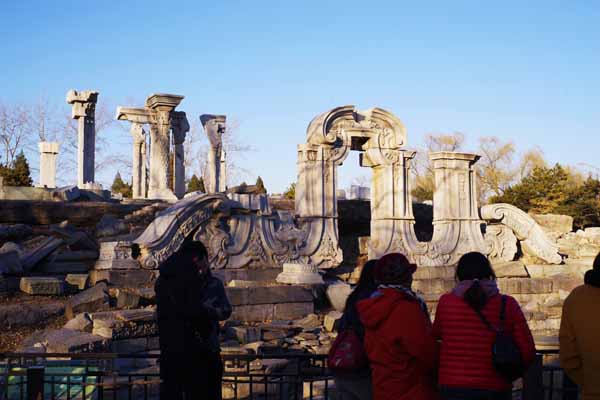 |
|
The Dashuifa, a part of the Western-style Xiyang Lou ruins in Yuanmingyuan, is an iconic site of the former royal resort in Beijing. [PHOTO BY YANG XIANCAN/FOR CHINA DAILY] |
It's a widely held misconception among the Chinese public that Yuanmingyuan was built according to Western styles since the most famous aboveground icons that survived are columns and the gates of Xiyang Lou, a building that was built according to foreign conventions, Li says.
"However, Xiyang Lou accounts for only 2 percent of the area in Yuanmingyuan," Li explains. "The true Yuanmingyuan can be unveiled through more studies on what's underground."
The government of Haidian district, where the park is located, has spent 5.6 billion yuan ($848 million) in recent years to relocate villagers living on an area of 22 hectares, which was the park of Yuanmingyuan.
"Villagers used to take bricks from the ruins to construct their own houses," Li says.
"Now, we've reclaimed more than 80,000 bricks or other components. They can be used to restore some sites in the park."
Some construction plans in Beijing have been amended to protect historical sites amid rapid urbanization.
Yu Ping, deputy director of Beijing's Administration of Cultural Heritage, says the discoveries will consolidate the city's status as a national cultural hub.
"Multiple ways are being developed to better use these cultural resources to benefit the public," she says.
"That also serves the inheritance of cultural heritage, a goal emphasized by the 19th National Congress of the Communist Party of China."